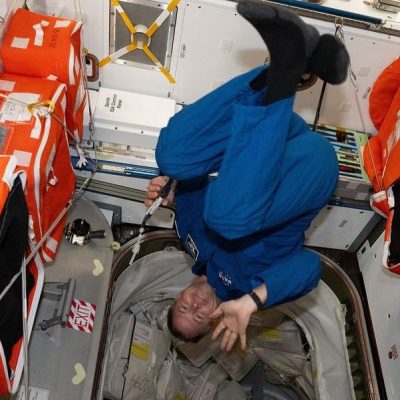
Jordan McRae ’05: Tapping bones to help people communicate
Slice of MIT talks to the Course 16 alum about his startup Mobilus Labs.
Jordan McRae ’05 was scuba diving off the coast of Mozambique many years ago when he started having trouble with his regulator. Unable to breathe effectively, he signaled to a fellow diver for help—but his companion didn’t understand and ended up making the situation worse. “I didn’t die, but I was pretty scared,” McRae says.
The experience inspired McRae to seek a technical solution to the problem of communicating in challenging audio environments. Today he is the founder and CEO of Mobilus Labs, a startup commercializing a voice communication platform that works wherever it is hard to hear. “I was inspired by inventors like Jacques Cousteau and his collaboration with MIT’s very own [Professor Harold] “Doc” Edgerton, whose inventions enabled us to explore and capture whole new worlds,” McRae says. “I wanted to take that a step further and unlock the ability for groups to experience these environments together and while doing so communicate, share, and collaborate.”
“Voice is incredibly information-rich, and we sometimes overlook that,” says McRae, who earned his MIT degree in aeronautical/astronautical engineering with a focus on space and ocean robotics. Mobilus’s wearable device, mobiWAN, captures and delivers voice communication through bone conduction—a method for transmitting sound through vibrations to the skull—rather than the usual method of detecting sound waves that come through the air and hit the ear drum. Sound is then wirelessly transmitted from person to person via a cloud-based software platform.
“If someone’s speaking to me, that communication arrives into my smartphone or a smart device via Bluetooth. It’s wirelessly transmitted to the mobiWAN, and then micro vibrations are transmitted onto the surface of my skull and my head, and I perceive that audio from those vibrations going into my inner ear,” McRae explains.
An experienced entrepreneur with a master’s degree from Stanford, McRae is the former co-director of NASA’s Frontier Development Lab, an applied research accelerator. He founded OCTO23 Technologies in 2009 to develop technology for underwater communication, and that business evolved into Mobilus Labs, founded in 2017.
While McRae says the goal is for Mobilus to offer a ubiquitous platform that provides effective noise cancellation for a full range of consumer needs—including diving—for the moment the focus is on the major consumer need he sees in industrial sectors such as manufacturing, construction, and energy.
“Workers have safety helmets on, eye protection, hearing protection. It’s very hard to communicate. Right now, probably what a lot of them are doing is shouting across a room or shouting into a radio,” McRae says. “These men and women are very often in very dangerous, noisy environments. And so, it becomes even more critical to have effective communication as they work together as teams. Mobilus is dedicated to developing the suite of technologies that would be required to enable these frontline workers to communicate more effectively and safely in these environments.”
In 2021, Time magazine named mobiWAN one of the best inventions of the year.

